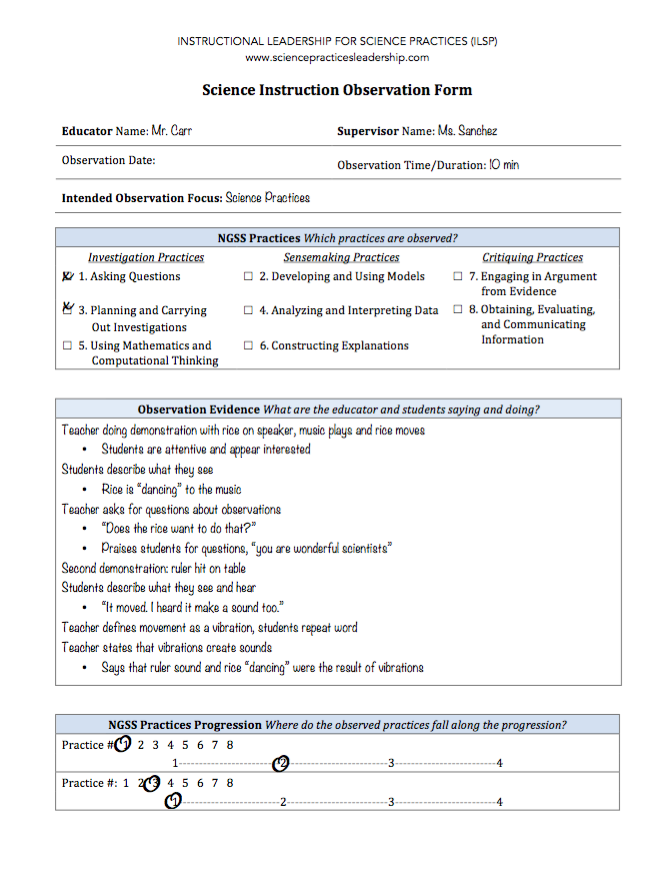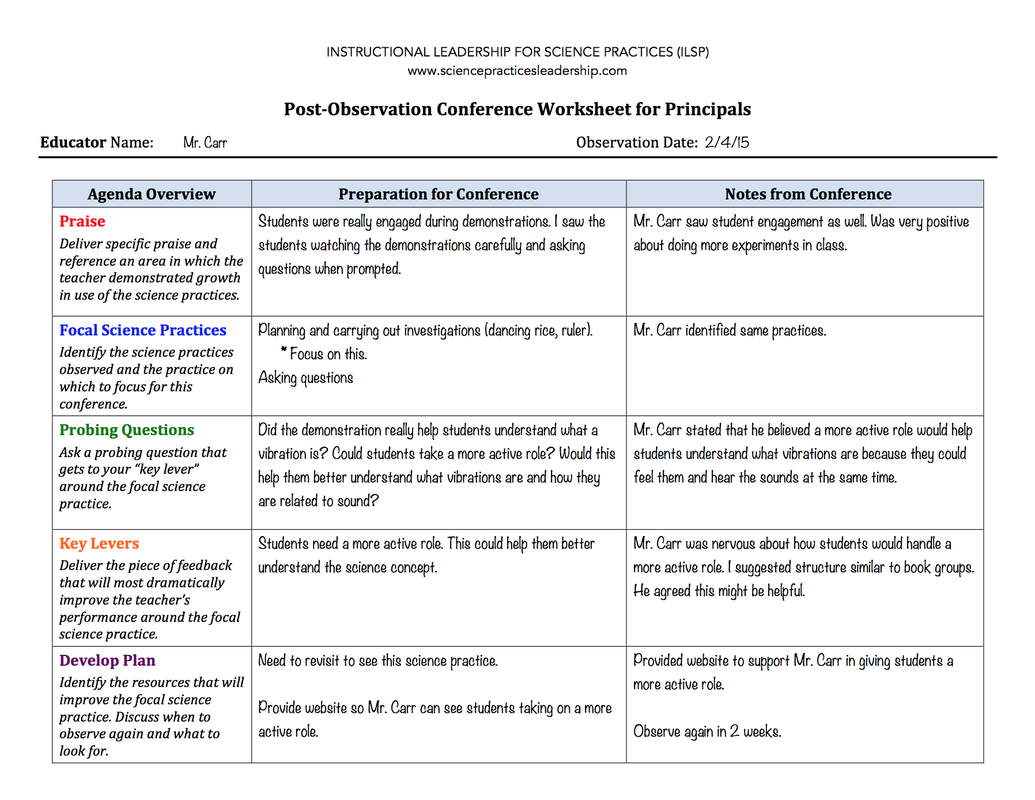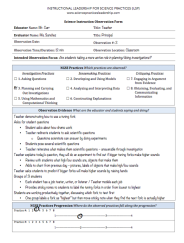Case Study: Grade 1 Conference
|
Focal Science Practices:
Related NGSS Performance Expectations: 1-PS4-1: Plan and conduct investigations to provide evidence that vibrating materials can make sound and that sound can make materials vibrate. Transcript
|
Tools
Initial Observation Form
Conference Worksheet
Follow-Up Observation Form
|
PLACEHOLDER


